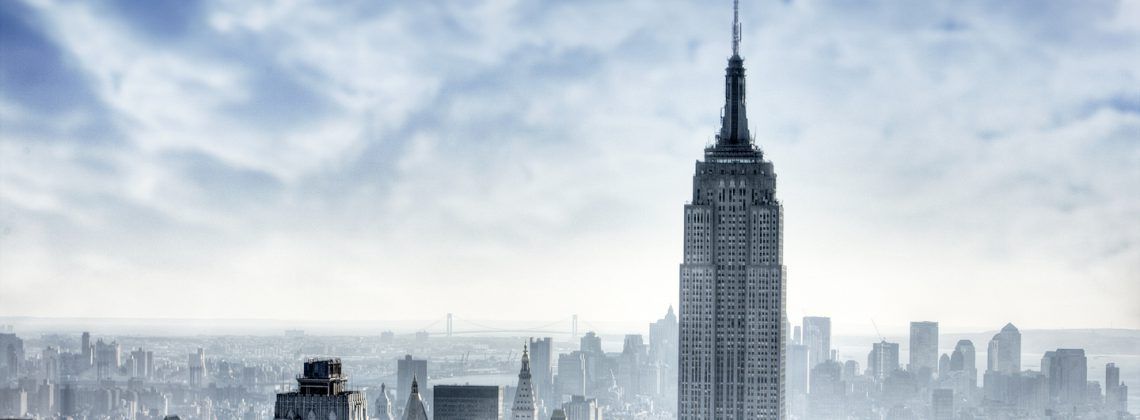The Empire State Building is one of New York City’s iconic landmarks. This massive skyscraper is also a monument to American ingenuity and financial success. But did you know the Empire State Building was once called the “Empty State Building?” Read more about the Empire State Building’s History Below!
This article isn’t meant to replace a guided visit – quite the opposite! Reading up on an attraction will make a guided tour more memorable and interesting! You will impress your travel partners and engage more with the guide. Check out our guided tours
The Highs and Lows of One of the World’s Most Famous and Tallest Buildings
Few buildings anywhere are as recognizable as New York’s Empire State Building. It is a symbol of New York City and an embodiment of America’s rise to global financial power in the 20th century. Moreover, the Empire State Building is a fine example of Modernist Art Deco style from an architectural perspective.
However, as scholars like John Tauranac explain, the building’s history is not a linear story of triumph. For starters, its origins read more like a plot from an F. Scott Fitzgerald novel. In other words, if you’re a fan of the Jazz Age and the Great Gatsby, keep reading.
This short article explores the Empire State Building’s history, from its origins as a symbol of Roaring Twenties American optimism and success, to the depths of the Great Depression. Finally, it examines the skyscraper’s rise as a tourist attraction and iconic symbol of New York City’s skyline.
Why is the Empire State Building So Important?
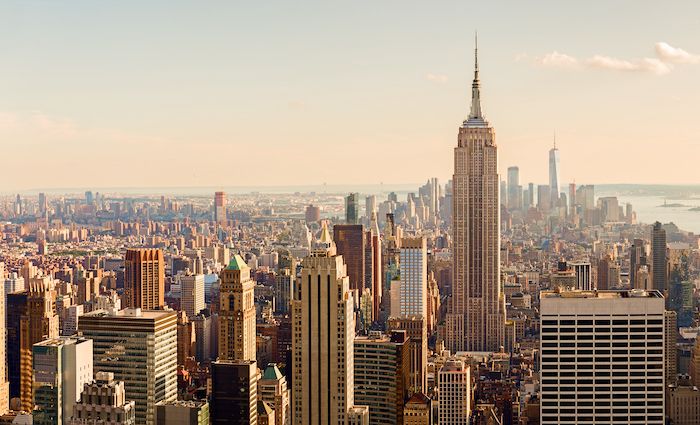
But first, let’s start with answering why the Empire State Building exists and what makes it so important. First off, as art historian Tamsin Pickeral notes, the Empire State Building’s outward purpose was to serve as a massive office complex. However, it is clear, as Pickeral points out, that the Empire State Building was built to become the world’s tallest building. And it did hold that title for a time.
The building’s stats are indeed impressive. Historian John Tauranac points out that the Empire State Building is 102 stories high, 1,250 feet tall-1,454 feet if you include the tv antenna. It is in Manhattan at 350 Fifth Avenue, on the west side of the avenue between 33rd and 34th Streets. Moreover, the antenna you see today is not the original idea for what would top the building. In fact, showcasing its modernity and innovative spirit, this area of the building historian Piers Brendon tells us was meant to be a base for dirigibles (better known as Zeppelins).
Architecture historian and critic Vincent Scully says the Empire State Building was “built as much for glory as the Parthenon was.” While that may have been what the visionaries had in mind, the building’s early history does not align. We need to start about a decade before its 1931 grand opening to appreciate the Empire State Building’s fascinating history.
1920-1929
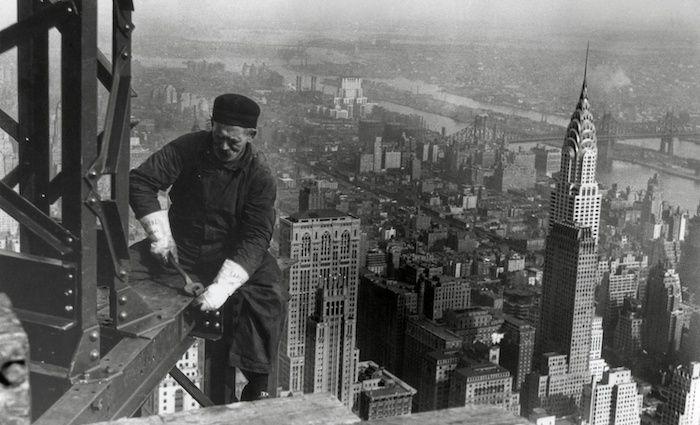
Roaring Twenties | Wealth | Ambitious Plans
You’ve probably heard the term “Roaring Twenties” to describe the American experience after WWI. As historian Piers Brendon tells us, these years were marked by social and economic changes-from Jazz to flappers and crazy wealth.
The man who epitomized this time in America also happened to be the catalyst for the Empire State Building’s creation. His name was John J. Raskob. An influential figure in the Democratic Party, Raskob’s wealth came from his association with the DuPont family and General Motors. As his biographer David Farber says, Raskob liked to characterize his wealth as a rag to riches story.
In other words, nobody reflected the American Dream in the early 20th century more than John Raskob. However, David Farber says that while Raskob emerged as a self-made millionaire, he did not grow up as poor as the popular story suggests.
Nevertheless, the American public delighted in Raskob’s ambitious personality and grand plans in New York. Moreover, Raskob found a powerful ally in longtime New York Governor Al Smith. Governor Smith soon became a former elected official as both an unsuccessful presidential bid in 1928 and FDR’s election as New York Governor damaged his political fortunes. According to historian Benjamin Sitton Flowers, Raskob and Smith worked out plans to build the tallest skyscraper by the summer of 1929.
October 1929-May 1, 1931
Initial Plans | Wall Street Crash | Speed
However, the Stock Market collapsed only months after Raskob and Smith publicly announced the plans for the Empire State Building. As historian Benjamin Sitton Flowers says, while Raskob did not lose his fortune overnight in October 1929, the results certainly damaged the Empire State Building’s prospects.
Rather than scrap ambitious plans, Raskob and Smith pressed on with their team of architects and contractors. Historian Piers Brendon notes that the firm Shreve, Lamb, and Harmon designed the building in little more than two weeks! Speed became a theme for the building. For example, Tamsin Pickeral says that the contractors oversaw the building’s completion in a year.
Rapid construction came with a cheaper overall price tag because of the declining cost of labor. Construction also came with a heavy human toll. For instance, historian Piers Brendon reminds us that 48 workers lost their lives in the process. Nevertheless, work pressed on, and the building was ready for public display by the spring of 1931.
May 1, 1931
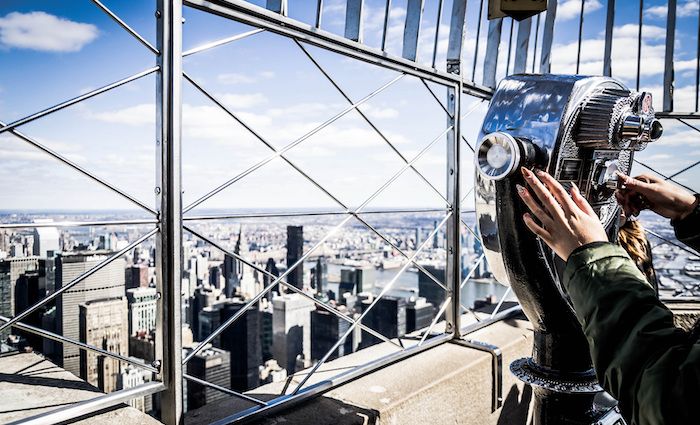
Grand Opening | First Impressions | New Era
Two connected events marked the Empire State Building’s grand opening in May 1931. The first took place a few hundred miles away from Manhattan. As historian Piers Brendon tells us, that morning President Herbert Hoover in Washington D.C. flipped a switch, and the Empire State Building’s lights turned on.
Following this part of the ceremony, Al Smith’s granddaughters cut the ribbon in front of the Empire State Building. Next, as historian John Tauranac explains, Smith, in his capacity as President of the Empire State Company, used a special set of keys to open the Empire State Building’s doors for the first time.
After the opening festivities, newspaper articles recount how visitors gathered on the 86th floor’s observation deck to marvel at the views of Greater New York. Indeed, crowds of guests, according to John Tauranac, jammed the building’s souvenir stands, tearoom, and soda fountain. Indeed, it appeared Raskob and Smith’s hailing of the Empire State Building as the “Eighth Wonder of the World” seemed appropriate. For his part, Al Smith is said to have remarked that the Empire State Building was “a great piece of work.”
1931-1941
Great Depression | Disappointments | Odd Jobs
For all the pomp and circumstance of the opening ceremony, the building’s daily reality became less glamorous. And the Great Depression was the culprit. As a result, many floors remained empty as management failed to secure tenants for the office space.
Despite the lack of tenants to occupy the office space, the building’s manager Chapin L. Brown maintained a significant staff. According to historian John Tauranac, the skyscraper in the 1930s had a “miniature hospital” and a full-time team of trained firefighters. Tauranac says that the firefighters even had custom-made equipment designed for the Empire State Building. Yet, in the 1930s, it indeed appeared that “Empty State Building” was the skyscraper’s more appropriate name.
Indeed, the Great Depression’s worst effects were felt in the early 1930s for the Empire State Building. One example captures the impact of the Great Depression on the Empire State Building’s prospects. Historian Piers Brendon says that in the late 1930s, a recent Dartmouth grad delighted to get a job at the Empire State Building.
However, Brendon explains, this Dartmouth grad did not work for a firm in the building. Instead, the job entailed flushing all the toilets on the many vacant floors so that chemicals would not damage the porcelain finish. Indeed, the Great Depression took its toll.
1941-1945
War Years | New Roles | Tragedy
However, historian John Tauranac says the war years changed the Empire State Building’s fortunes. As the US entered WWII, the Empire State Building received new tenants in military personnel, government officials, and war relief agencies. Moreover, the building staff adjusted to wartime regulations, like blackouts and air raid drills. Thus, manager Chapin L. Brown’s primary job changed from finding new tenants to protecting the building and staff from possible attacks.
Tragedy struck the Empire State Building on the morning of July 28, 1945. With victory in Europe secured and the war nearly over in the Pacific, the Empire State Building faced its most harrowing moment. On that morning, historian John Tauranac tells us a B-25 bomber crashed into the building. Although disputes arose about whether the crash’s cause involved pilot error or mechanical problems, the event deeply shocked New Yorkers and the country. According to Tauranac, the crash claimed 14 lives and caused substantial damage. The structure overall, though, withstood the impact and blast.
1945-2001
Postwar | Growth | Profitability
The Empire State Building’s post-WWII years suggested a massive change for the better. By the late 1950s, occupancy of the building’s office space rose at great rates. As historian John Tauranac explains, temporary tenants included United Nations agencies before the organization’s headquarters were built. By this point, Tauranac continues, more than 15,000 office staff from 500 different organizations worked within the Empire State Building. The Empire State Building finally began to turn a profit from office rentals.
One reason for this positive change was the growth in new technologies like television in the 1950s. In fact, a massive antenna replaced the original idea of mooring zeppelins at the top of the building. As John Tauranac points out, NBC-TV secured exclusive rights to broadcasting from the Empire State Building as early as 1931. By the 1950s, Tauranac says that no station could rival the local NBC station in New York because they were forced to broadcast from lesser buildings.
Indeed, the postwar years ushered in many positive developments. However, the Empire State Building in 1972 lost its title as New York’s tallest building to the North Tower of the World Trade Center. Furthermore, the construction of Chicago’s Sears Tower knocked the Empire State Building lower in the rankings. As scholar Tamsin Pickeral explains, though the Empire State Building endured several sales in those decades, it remained a popular tourist attraction.
2001-Present
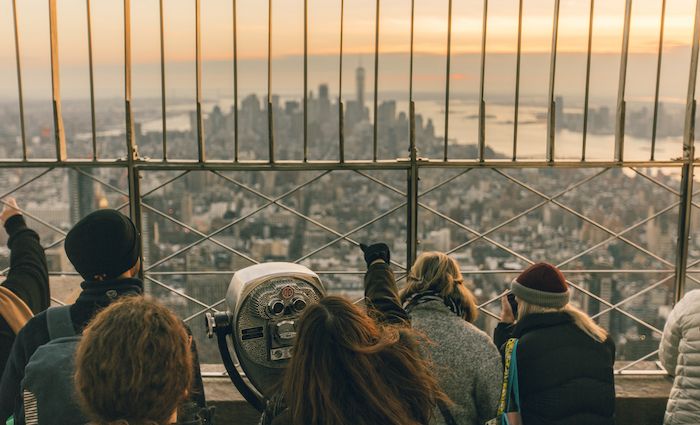
Post-9/11 | New Technologies | Renovation
In the aftermath of the 9/11 attacks in 2001, the Empire State Building temporarily regained its status as the city’s tallest building. However, as historian John Tauranac reminds us, the Freedom Tower eclipsed the Empire State Building in 2013.
Moreover, the Empire State Building is as technologically modern and environmentally friendly as any new construction. For instance, Tamsin Pickeral explains that the building underwent a massive renovation project in 2007. On top of this, John Tauranac says that the renovation to the building’s interior reclaimed original designs from the 1930s. Moreover, the building’s interior is LEED-Gold Certified, according to Tauranac.
For all the highs and lows since the 1930s, the Empire State Building remains a symbol of New York City and American innovation.
